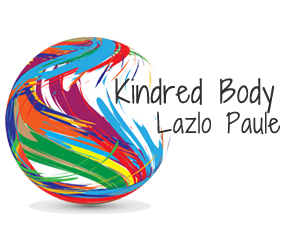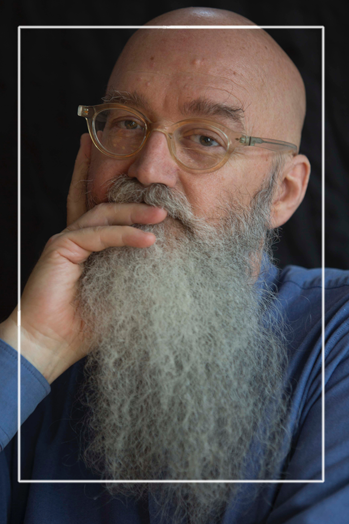
Lazlo Paule, LMBT (NC# 6477)
My goal and my treatment regime is to help people, by whatever means necessary. I have trained extensively in a variety of protocols - using whichever methods help them get out of pain or improves their condition.
Anything can cause anything - as one of my favorite professors used to say. And there is no magic in finding what is causing the problem - I just listen! My clients usually tell me what it is.
More about how I work...
#1. Everything is connected. Therefore anything can cause anything.
#2, Bones go where muscles put them. Bones stay where muscles keep them.
#3, Don’t treat the symptoms, but find the source of the problem. Eliminate that and the symptoms will disappear.
(The exception to this is when someone is in pain. In this case I’ll do whatever it takes to eliminate or at least lessen the suffering.)
#4, Find the appropriate Neurological Laws that govern the body and figure out why the person on my table cannot obey the law’s structural requirements.
Here is a quote from one of my favorite characters, Sherlock Holmes: “When you have eliminated the impossible, whatever remains, however improbable, must be the truth.”
Let me give you an example of what am I talking about.
I had a female client (let’s name her Sue), who came to see me for her chronic migraines after many many years of looking for answers.
Her doctors have eliminated the chemical and food sensitivity, hormonal imbalance, bio-chemical shortcomings, etc, etc.
Now what..?
“ …whatever remains, however improbable, must be the truth…”
Bio-mechanical.
She had flat feet. After setting her up with the appropriate orthotics — within days her migraine was gone and has never returned.
Why? Let’s look at rule #4
In Sue’s case, the neurological law that applied was the Law of Generalization: When the irritation becomes very intense, it is propagated in the medulla oblongata, which becomes a focus from which stimuli radiates to all parts of the cord, causing a general contraction of all muscles to the body.
Can you say migraine?
See? Everything is connected.
This is why I am here.
I’m here to tell you
Be realistic, expect miracles!
But be patient - the impossible takes slightly longer than the difficult.
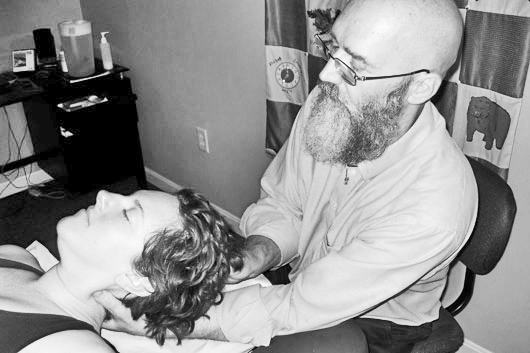
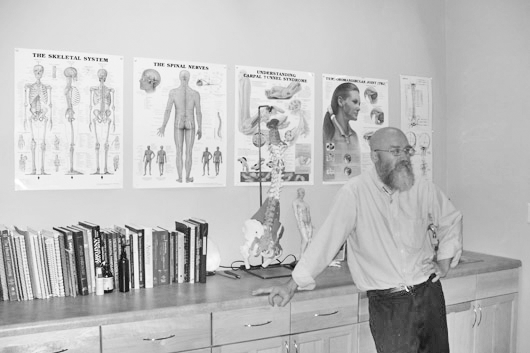
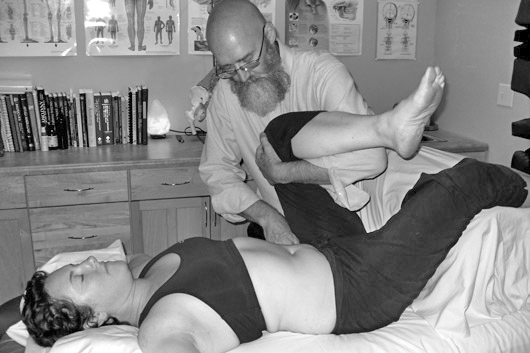
Examples of Protocols Lazlo has Trained In...
Paul St. John Neuro-muscular therapy (NMT) is a precise, thorough examination and treatment of the body’s soft tissues using regionally oriented protocols.
In addition, NMT considers perpetuating factors that may be associated with the client’s complaints. Perpetuating factors can also include joint pathologies, postural positioning, habits of use, nutritional components, emotional wellbeing, allergies, neuroexcitants, neurotoxins, and other core elements that can masquerade as myofascial pain and dysfunction.
NMT assessments and examinations primarily address:
- ischemia (tight tissue with reduced blood flow)
- myofascial trigger points (hypersensitive points within muscles that give rise to referred phenomena, including pain)
- neural entrapment (pressure on nerves by muscles and other soft tissues), and nerve compression (pressure on nerves by osseous and other bonelike tissues, such as cartilage or discs).
- postural assessment (assessment of the position of the body as a whole)
- and dysfunctional gait patterns (manner of movement when walking)
- with constant consideration for many other perpetuating factors, such as hydration, nutrition, breathing patterns, and psychological stress.
NMT is highly effective for clients who present with chronic pain and is often successful in reducing or eliminating even longstanding painful conditions. Some of the techniques can also be applied to acute injuries and for post-surgical care; many help to improve performance in sport or dance and to prevent injuries due to these activities.
Aaron Mattes' Active Isolated Stretching (AIS) method of muscle lengthening and fascial release is a type of Athletic Stretching Technique that provides effective, dynamic, facilitated stretching of major muscle groups, but more importantly, AIS provides functional and physiological restoration of superficial and deep fascial planes.
Over the past few decades many experts have advocated that stretching should last up to 60 seconds. For years, this prolonged static stretching technique was the gold standard. However, prolonged static stretching actually decreases the blood flow within the tissue creating localized ischemia and lactic acid buildup. This can potentially cause irritation or injury of local muscular, tendinous, lymphatic, as well as neural tissues, similar to the effects and consequences of trauma and overuse syndromes.
Aaron Mattes' Active Isolated Stretching technique uses active movement and reciprocal inhibition to achieve optimal flexibility. Using a 2.0 second stretch has proven to be the key in avoiding reflexive contraction of the antagonistic muscle. Without activating muscle group contraction, restoration of full range of motion and flexibility can be successfully achieved.
Strain and Counterstrain is a manual therapy technique, meaning the clinician uses only their hands, to treat muscle and joint pain and dysfunction. It uses passive body positioning of spasmed muscles and dysfunctional joints toward positions of comfort or tissue ease that compress or shorten the offending structure. The purpose of movement toward shortening is to relax aberrant reflexes that produce the muscle spasm forcing immediate reduction of tone to normal levels. This allows the joints influenced by the now relaxed muscle to function optimally increasing its range of motion and easing muscle pain. Strain and Counterstrain is an effective but extremely gentle technique because its action for treatment moves the patient’s body away from the painful, restricted directions of motion.
A pain neutralization technique that focuses on trigger points and myofascial pain by using only light pressure on neurological reflexes.
The Kinesio Taping® Method is a definitive rehabilitative taping technique that is designed to facilitate the body’s natural healing process while providing support and stability to muscles and joints without restricting the body’s range of motion as well as providing extended soft tissue manipulation to prolong the benefits of manual therapy administered within the clinical setting.
Reiki is a healing technique based on the principle that the therapist can channel energy into the patient by means of touch, to activate the natural healing processes of the patient's body and restore physical and emotional well-being.
In Therapeutic Touch, therapists place their hands on or near their patient's body with the intention to help or heal. In doing so, therapists believe that they are consciously directing or modulating an individual's energies by interacting with his or her energy field. The focus is on balancing the energies of the total person and stimulating the body's own natural healing ability rather than on the treatment of specific physical diseases.
Quantum-Touch uses life-force energy (known as chi in Chinese and prana in Sanskrit) to facilitate healing. The Quantum-Touch techniques teach us how to focus and amplify life-force energy by combining various breathing and body awareness exercises.
CranioSacral Therapy (CST) is a gentle, hands-on approach that releases tensions deep in the body to relieve pain and dysfunction and improve whole-body health and performance. It was pioneered and developed by Osteopathic Physician John E. Upledger after years of clinical testing and research at Michigan State University where he served as professor of biomechanics.
Using a soft touch which is generally no greater than 5 grams - about the weight of a nickel - practitioners release restrictions in the soft tissues that surround the central nervous system. CST is increasingly used as a preventive health measure for its ability to bolster resistance to disease, and it's effective for a wide range of medical problems associated with pain and dysfunction.
The source of chronic pain for many arises from very common imbalances and dysfunctional patterns in the musculoskeletal system. Most chronic pain can be relieved with a combination of skilled manual therapy and intelligent corrective exercise.
The Myoskeletal Alignment Technique (MAT) system brings together the most advanced therapeutic strategies to relieve, and ultimately correct, patterns in the body that lead to pain and deterioration. With MAT therapy, clients can be free from pain, avoiding invasive surgery or toxic pain medications.
Muscle Energy Technique (MET) has developed by an Fred L. Mitchell, Sr. D. O osteopathic physician in the 1950's. MET is a non-invasive method of manual therapy. It helps with relieving pain, fixing joint issues, reducing edema and improving a person's range of motion.
It is based on reciprocal inhibition, (the relaxation of a muscle in response to the contraction of its antagonist). Based on reciprocal inhibition, the muscles located to one side of a joint relax when the muscles on the other side of the joint contract.
For this therapy, an indirect type of pressure, referred to as anti-force, is applied to the muscle, facilitating the relax/contract effect and optimal stretching. Essentially, the muscle energy technique uses the patient's muscle energy against anti-force, which is a stationary surface that the therapist provides. This enables the patient to stretch his muscle and the accompanying joint fully. The idea is that each contraction will stretch the muscle further.
The first muscle contraction in the muscle energy technique is referred to as an isometric contraction. This simply means that the muscle is made to work at a fixed length, even as tension builds.
The most common candidates for this technique are those with limited range of motion because of pain in the shoulders, neck and back. Also, those suffering from scoliosis and sciatica find the technique useful. The muscle energy technique is also used to treat those with muscle pain and stiffness as well as those who have suffered some sort of muscular injury.
Visceral Manipulation is based on the specific placement of soft manual forces to encourage the normal mobility, tone and motion of the viscera (internal organs) and their connective tissues.
By using specific techniques, practitioner can evaluate how abnormal forces interplay, overlap and affect the normal body forces at work. The goal is to help the body’s normal forces remove abnormal effects, whatever their sources. Those effects can be global, encompassing many areas of bodily function. These gentle manipulations can potentially improve the functioning of individual organs, the systems the organs function within, and the structural integrity of the entire body.
Practitioners using Visceral Manipulation assess the dynamic functional actions as well as the somatic structures that perform individual activities. They also evaluate the quality of the somatic structures and their functions in relation to an overall harmonious pattern, with motion serving as the gauge for determining quality.
Due to the delicate and often highly reactive nature of the visceral tissues, precisely directed gentle force reaps the greatest results. As with other methods of manipulation that affect the body deeply, Visceral Manipulation works only to assist the forces already at work. Because of that, trained practitioners can be sure of benefiting the body rather than adding further injury or disorganisation.
It's a type of bodywork that uses suction to lift tissues as the cup moves. This suction can help with problems in the lymphatic system, scar tissue restrictions, general inflammation, and relieving chronic pain conditions. The therapist will use cups made out of glass, silicone or plastic to create the suction needed for the therapy.
MediCupping™provides a wonderful bridge to the medical community, with special applications for pre- and post-surgery conditions, chiropractic and orthopedic work, conditions associated with Diabetes, Parkinson’s, Fibromyalgia, and much more. Results are fast and comfortable for the client. Along with the substantial health benefits of clearing old debris, the use of suction is invaluable in releasing soft tissue, scars and restricted fascia.
MediCupping™ uses a vacuum machine to create the suction and pumping movements that are normally done with manual vacuum pistols, to create a soothing, consistent and effective treatment without strain on the therapist or client. As an adjunct therapy to chiropractic manipulations, medical protocols and surgical recovery, MediCupping™ therapy accelerates patient progress.
